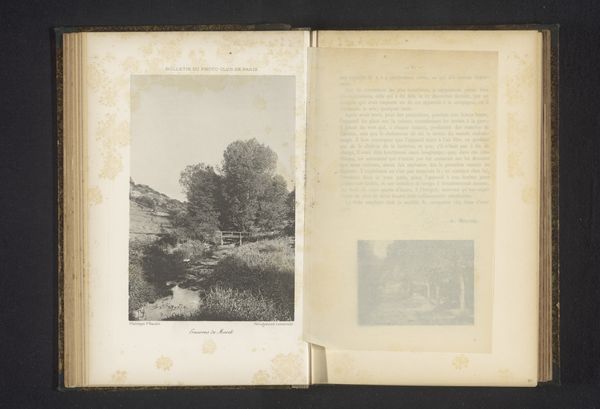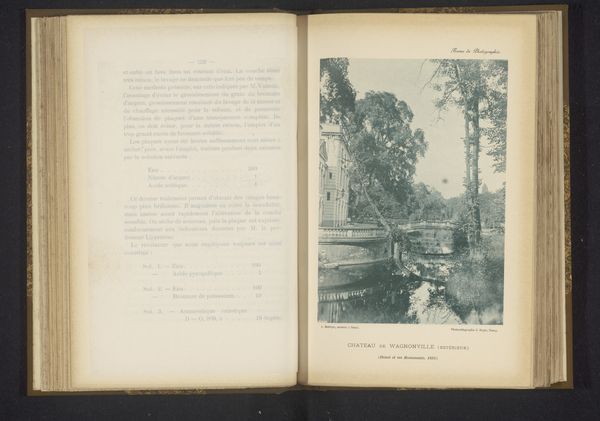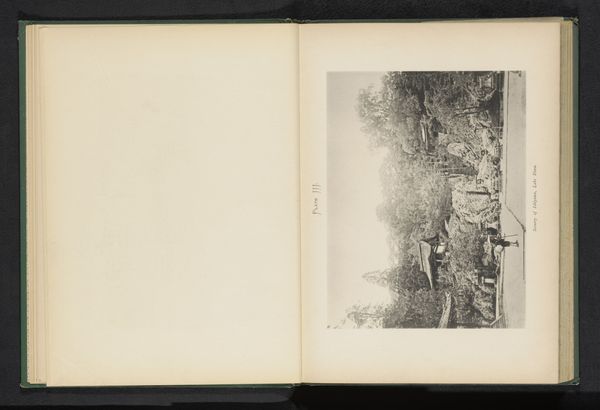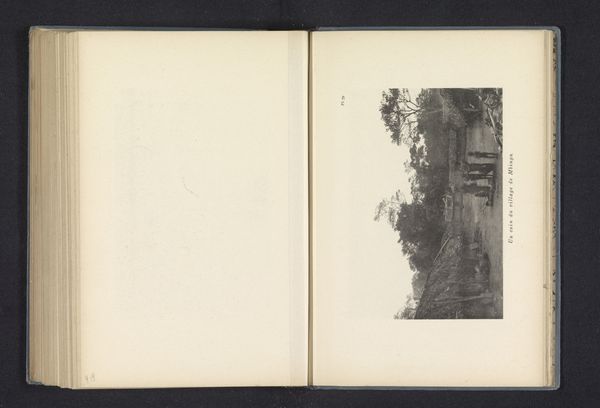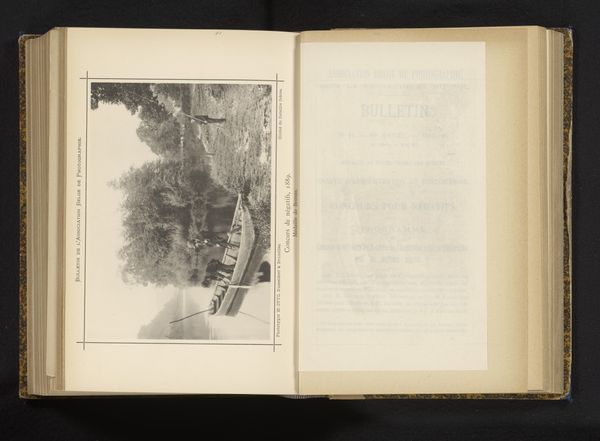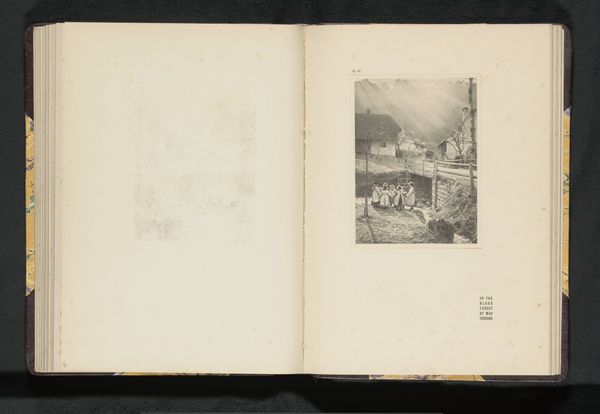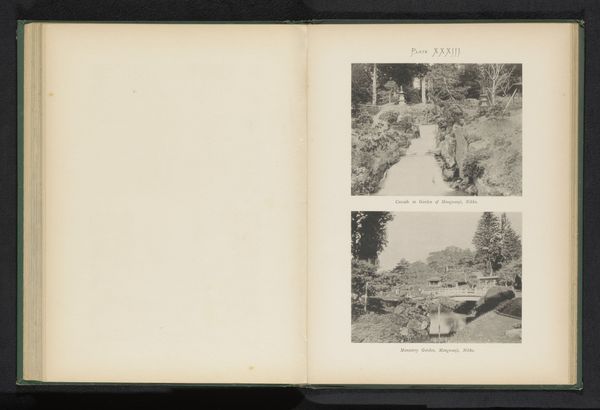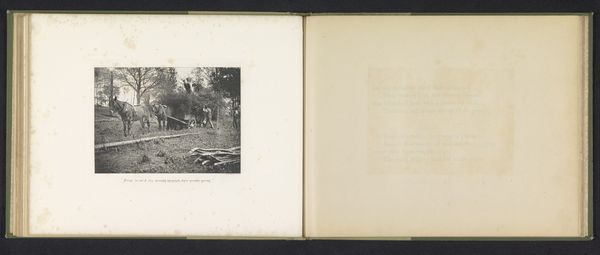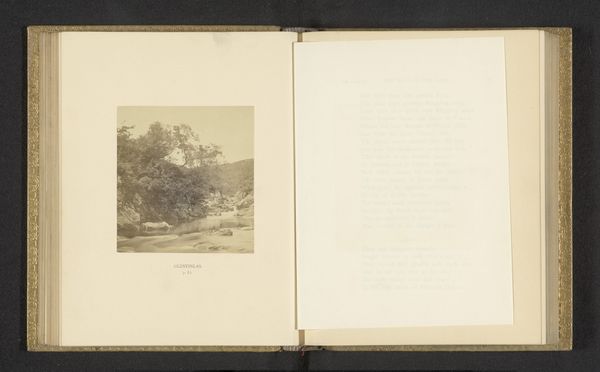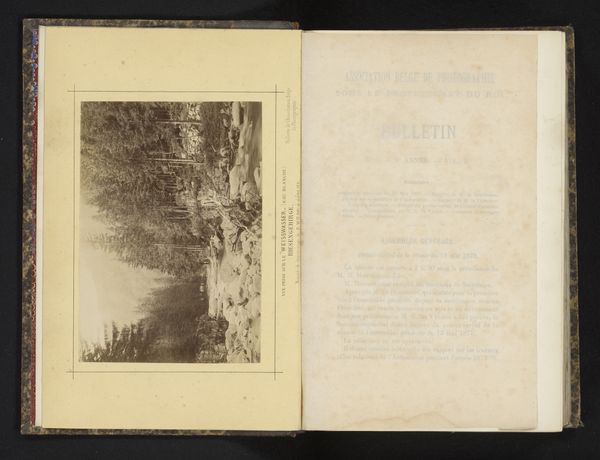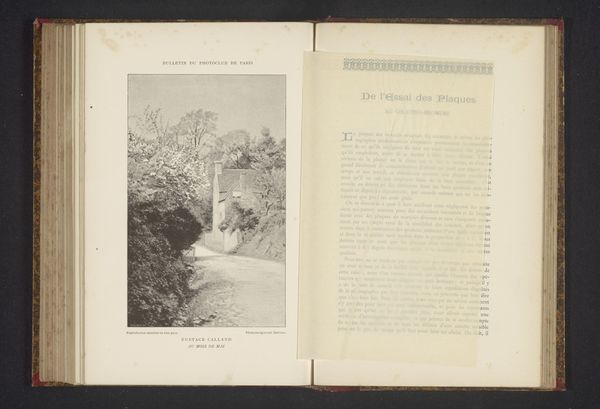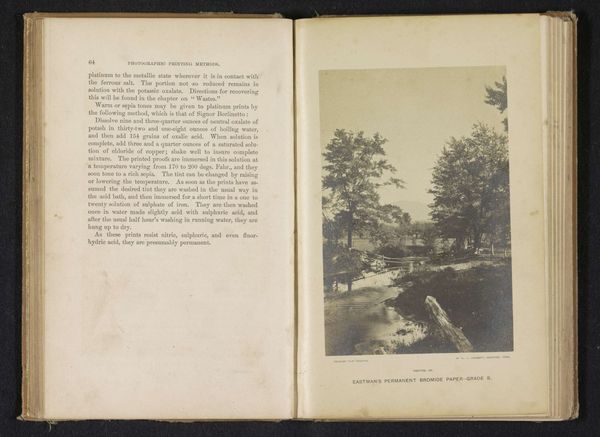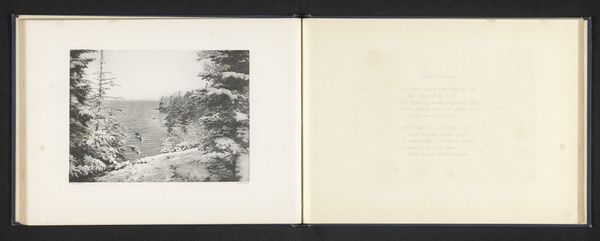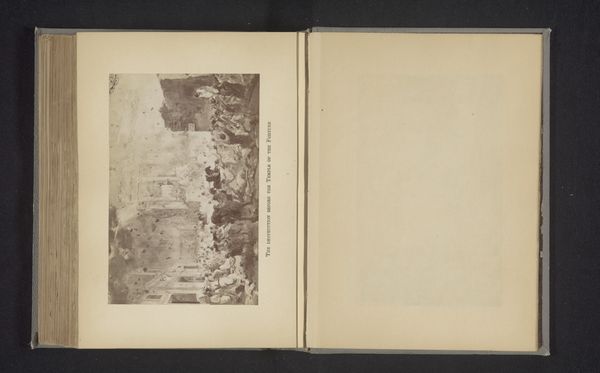
print, paper, photography
#
aged paper
#
homemade paper
#
paper non-digital material
#
paperlike
# print
#
landscape
#
paper texture
#
paper
#
photography
#
personal sketchbook
#
fading type
#
thick font
#
historical font
#
columned text
Dimensions: height 216 mm, width 160 mm
Copyright: Rijks Museum: Open Domain
Editor: Here we have a reproduction of a landscape painting, likely predating 1901, attributed to Ludwig Kieser. It appears to be a print in a book, possibly a photographic reproduction. It’s really striking how the landscape is captured with such tonal range, even in what looks like a mass-produced image. How do you interpret this work within its historical context? Curator: It's fascinating how readily available landscape imagery became around the turn of the century. Printmaking, especially photographic reproduction, democratized art, making scenes like this—likely of leisure and escape—accessible to a wider public. Think about the rise of the middle class, the increasing industrialization of cities... Do you see how this idyllic image offers a powerful counterpoint to that reality? Editor: That's interesting. It feels almost like propaganda now, idealizing nature in the face of urban growth. Was there a specific movement or ideology tied to these types of images? Curator: Certainly! Consider the Arts and Crafts movement and its emphasis on handcrafted objects and a return to nature in response to industrial mass production. While this image is itself mass-produced, the subject matter aligns with that longing for an unspoiled world. Who would have bought this book? Where would this book be displayed and consumed? Editor: Right, so this reproduction almost creates a paradox, advocating for a return to nature through a technologically advanced medium. I see what you mean about the societal tension it represents. Curator: Exactly! It shows how art reflects and shapes social desires, even through seemingly simple landscape imagery. The medium isn't neutral; it participates in a complex cultural dialogue. Editor: That really shifts my perspective on this seemingly straightforward image. Thanks for highlighting the social forces at play here; I definitely have more to consider now. Curator: And I see a fresh perspective on the relationship between technology and our understanding of nature, thank you.
Comments
No comments
Be the first to comment and join the conversation on the ultimate creative platform.
